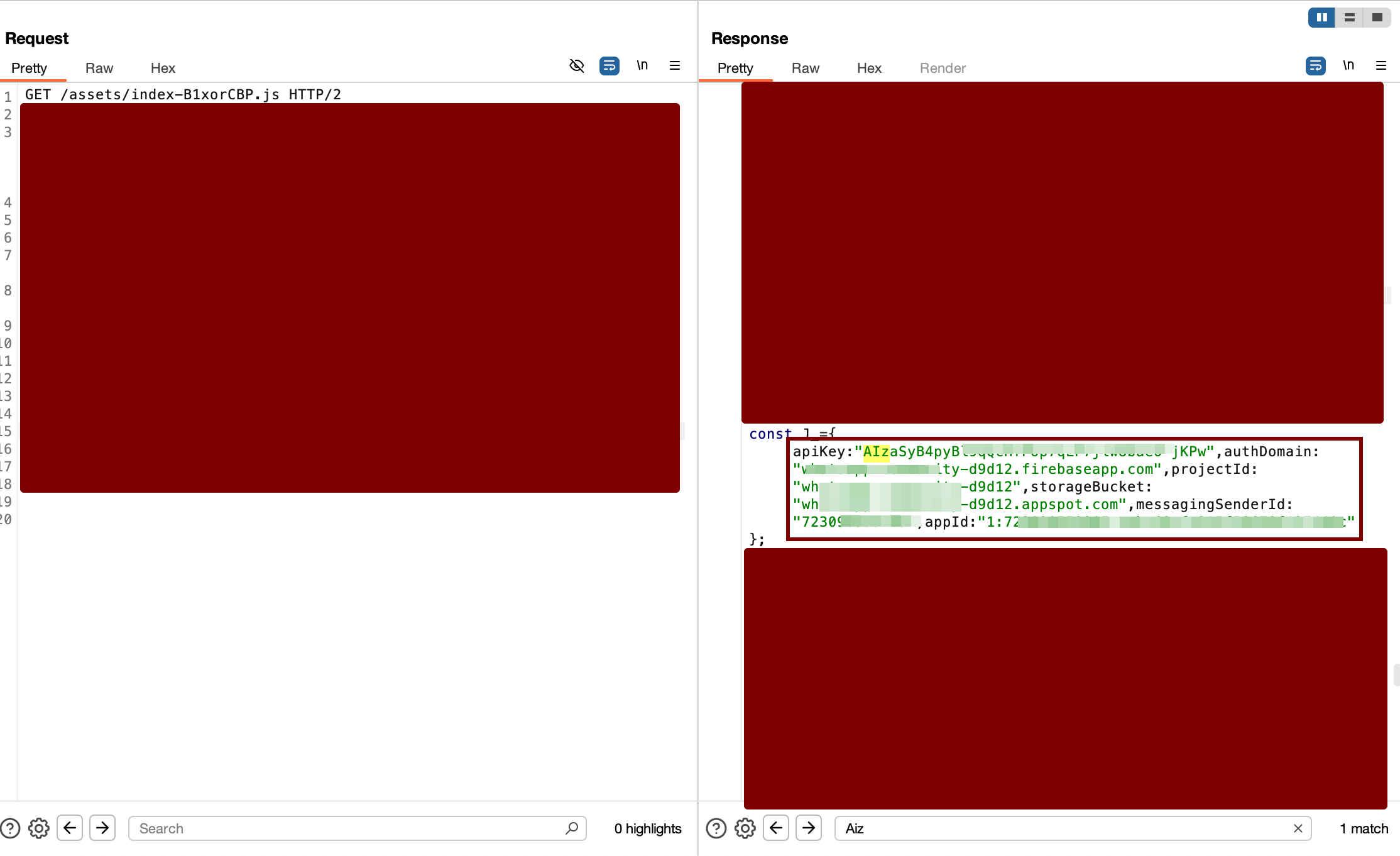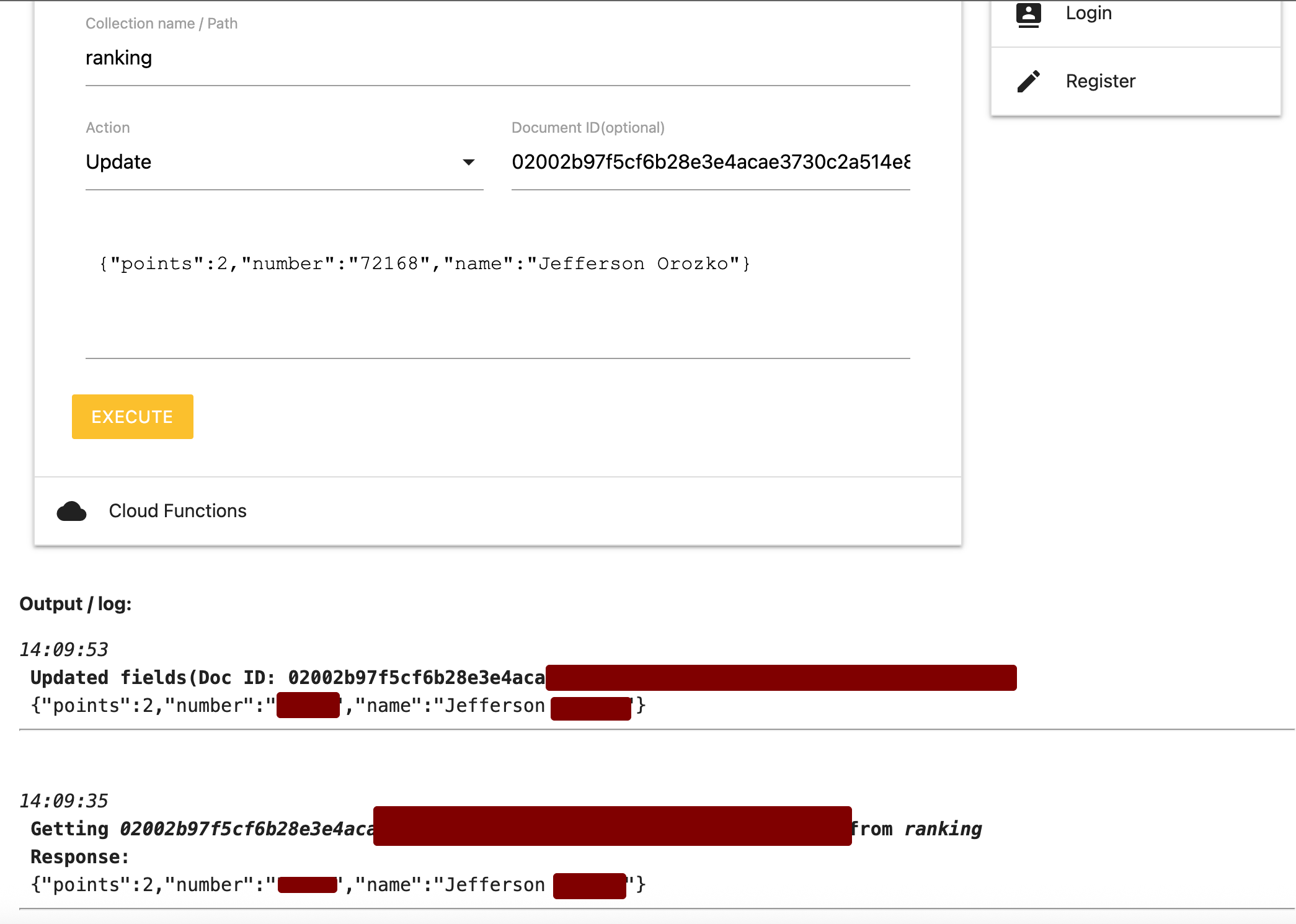Firebase Exposed: When Insecure Configurations Compromise Educational Platforms
Introduction: The Dark Side of Firebase
Hello everyone! Today we’re going to analyze a very common but dangerous problem in web development: insecure Firebase configurations. During a security investigation, I discovered multiple vulnerabilities in an educational platform that uses Firebase as backend, exposing user data and allowing unauthorized system manipulation.

What is Firebase and Why is it Popular?
Firebase is Google’s app development platform that offers a NoSQL database (Firestore), authentication, hosting, and many other services. Its popularity is due to ease of implementation, but this simplicity often leads to poor security configurations.
The Case: Compromised Educational Platform
Discovery Context
The analyzed platform is an educational site that includes:
- Online course system
- User community with point system
- Rankings based on activity
- User profiles with personal data
Vulnerability 1: Firebase Credentials Exposure
The Problem
Complete Firebase credentials are exposed in client-side JavaScript code, accessible from any browser.
Compromised File
GET /assets/index-B1xorCBP.js HTTP/2
Exposed Credentials
const firebaseConfig = {
apiKey: "AIzaSyB4pyBl9qQcHfPXXXXXXX",
authDomain: "whatsapp-XXXXXX.firebaseapp.com",
projectId: "whatsapp-XXXXXX",
storageBucket: "whatsapp-XXXXX",
messagingSenderId: "XXXXX",
appId: "1:XXXXS:web:XXXXXXX"
};
Why is this Problematic?
While Google says these credentials can be public, the real problem is misconfigured security rules that allow unauthorized access.

Vulnerability 2: Insecure Firestore Rules
Direct Access to Collections
The ranking collection has permissions that allow unauthorized read and write access:
// Unauthorized read
Getting [DOC_ID] from ranking
// Unauthorized write
Updated fields(Doc ID: [DOC_ID])
{"points":4510,"number":"XXXXX","name":"XXXX"}
Real Impact
Users can:
- Read data from other users
- Modify their own points arbitrarily
- Manipulate rankings without restrictions
- Access personal information of other users
Vulnerability 3: Personal Data Exposure
Compromised Information
Documents contain sensitive data partially exposed:
{
"points": 4510,
"number": "XXXXX", // Part of phone number
"name": "XXXX"
}
Exposed Data
- Parts of user phone numbers
- Real usernames
- Community scores and activity
- Document IDs that may reveal patterns
Practical Demonstration
Access from Firebase Console
With the exposed credentials, anyone can:
- Access Firebase Console with the Project ID
- Connect to Firestore directly
- Read collections without authentication
- Modify documents if permissions allow
Point Manipulation
// From browser console
const db = firebase.firestore();
// Read other users' data
db.collection('ranking').get().then((snapshot) => {
snapshot.forEach((doc) => {
console.log(doc.id, doc.data());
});
});
// Modify my own points
db.collection('ranking').doc('[MY_DOC_ID]').update({
points: 999999
});

Risks and Impact
🎯 For Users
Compromised Privacy
- Exposure of partial phone numbers
- Real names publicly visible
- Activity and progress accessible without authorization
System Manipulation
- False rankings affecting credibility
- Unfair competition in the point system
- Loss of motivation due to manipulated rankings
🏢 For the Platform
Loss of Integrity
- Gamification system completely compromised
- User trust damaged
- False metrics for business analysis
Legal Risks
- GDPR non-compliance due to data exposure
- Legal liability for information leakage
- Potential sanctions from data protection authorities
Common Insecure Configurations
// NEVER do this
allow read, write: if true; // DANGEROUS!
// Weak rules
allow read, write: if request.auth != null; // Insufficient
Security Recommendations
🛡️ Secure Firestore Configuration
Robust Security Rules
rules_version = '2';
service cloud.firestore {
match /databases/{database}/documents {
// Only owner can read/write their data
match /users/{userId} {
allow read, write: if request.auth != null && request.auth.uid == userId;
}
// Rankings read-only for authenticated users
match /ranking/{docId} {
allow read: if request.auth != null;
allow write: if false; // Only through Cloud Functions
}
}
}
Data Validation
// Validate data structure
allow write: if request.auth != null
&& request.auth.uid == userId
&& validateUserData(request.resource.data);
function validateUserData(data) {
return data.keys().hasAll(['name', 'email'])
&& data.name is string
&& data.email is string
&& data.email.matches('.*@.*');
}
🔐 Best Practices
Secure Configuration
- Implement robust authentication with Firebase Auth
- Use granular rules per collection
- Validate input data
- Never store sensitive data in public documents
- Use Cloud Functions for critical operations
// Secure example
exports.updatePoints = functions.https.onCall(async (data, context) => {
if (!context.auth) throw new functions.https.HttpsError('unauthenticated');
const userId = context.auth.uid;
await admin.firestore().collection('ranking').doc(userId).update({
points: admin.firestore.FieldValue.increment(data.points)
});
});
Conclusions
Lessons Learned
This case demonstrates very common Firebase problems:
- Ease of implementation vs security complexity
- Default configurations too permissive
- Lack of awareness about security implications
For Developers
- Security rules are your first line of defense
- Test configurations before production
- Implement the principle of least privilege
This analysis is published for educational purposes to raise awareness about the importance of secure configurations in Firebase and similar platforms.